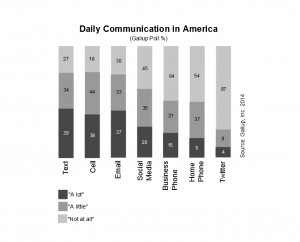— March 12, 2018

geralt / Pixabay
It’s clear that activity drives results—or at least it should.
We all know that orders and revenue is a trailing metric. The danger of focusing on end results is that by the time you can report them, it’s too late to do anything about it. If you focus only on making the number, at the end of the month, quarter, year, you’ve missed it, there are no do overs. You can only look to recovering in future periods–but then it’s too late, you’ve missed your goal.
As a result, we want to find the leading indicators/activities that produce the results we expect. We start looking at things like pipeline metrics, meetings, proposals, prospecting calls, and so forth.
We identify these metrics by walking backwards in the buying/selling process. What are the key activities that drive orders? What are the activities that drive those prior activities, and so forth up to, how many people/organizations do we need to be engaging to produce our numbers.
It sounds logical, makes sense. But somehow, too often, we lose the connection between activity, outcomes, results. Soon we start looking at activity for activity sake–and there is no connection with the results they produce.
Some examples:
- A client insists sales people have at least 3 times coverage on their pipeline. I ask why he chose 3 times, he said, “That’s the way I’ve always done it.” When I point out the average win rate across the organization is 22-25% and that he needs 4-5 times coverage to make his number, he blanches. He’s chosen a good metric but the wrong goal. Plus, he really needs to look at it individually. A small number of his people have 40-45% win rates and only need 2-2.5 times coverage. So he is detracting from their ability to perform, just because he wants to see more deals. They are at risk of leaving.
- Another client says they need 7-9 times coverage, indicating a win rate of 11-14%. This means the sales people have to maintain unreasonably large funnels and spend huge amounts of time prospecting. In fact, what’s happening is their win rate is declining further. I challenge the VP, “What are you doing to focus on improving pipeline quality, win rates, average deal sizes, to free up the time so they can actually manage the deals.
- Another client insists on 15 proposals per sales person per week. I ask why, his response is “If they are doing a lot of proposals, they are likely to close more business.” The problem is, the sales people are gaming the system, they are sending out unsolicited proposals to hit their number and to prospect. It’s not improving his results and forces them to be in a pricing discussion, before they even know how they are positioned and what it takes to win. As you might guess, the percent of proposals that close are very low–but his people are hitting the number.
- A different organization mandates 50 prospecting calls per week. When I ask, “How do you know it’s enough? How do you know they are calling on the right people? How do you know they are accomplishing what they should be accomplishing in these calls?” The problem is the focus became purely the number of calls, they had lost sight of how these calls linked to finding qualified deals, their abilities to close those deals and the ability to achieve their goals. Over time, the number of weekly calls had been increasing, sales people were gaming the system, making their calls, but not producing the results needed.
I could go on, but you get the point. Activities are only meaningful when they are done in the context of results that need to be created. We constantly need to be examining the whole activity chain to see if the activities are producing what’s needed. We can’t arbitrarily declare activity levels, without understanding their connectivity to the results. We have to constantly be assessing and re-engineering the activity chain, not seeking more activity, but tilting the numbers in our favor so we are doing the right activities.
Business & Finance Articles on Business 2 Community
(44)
Report Post







